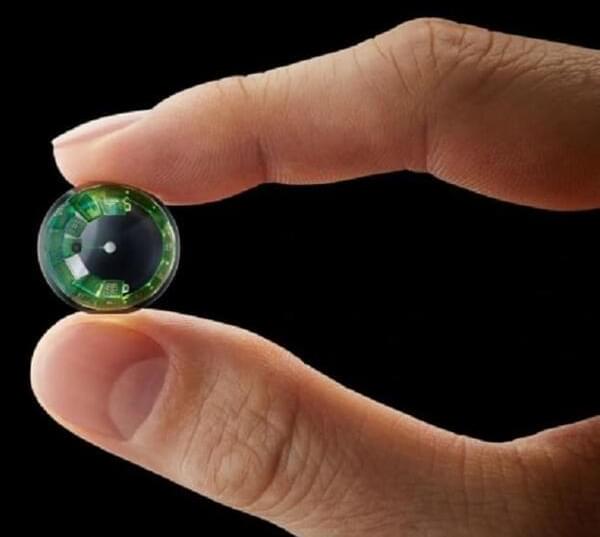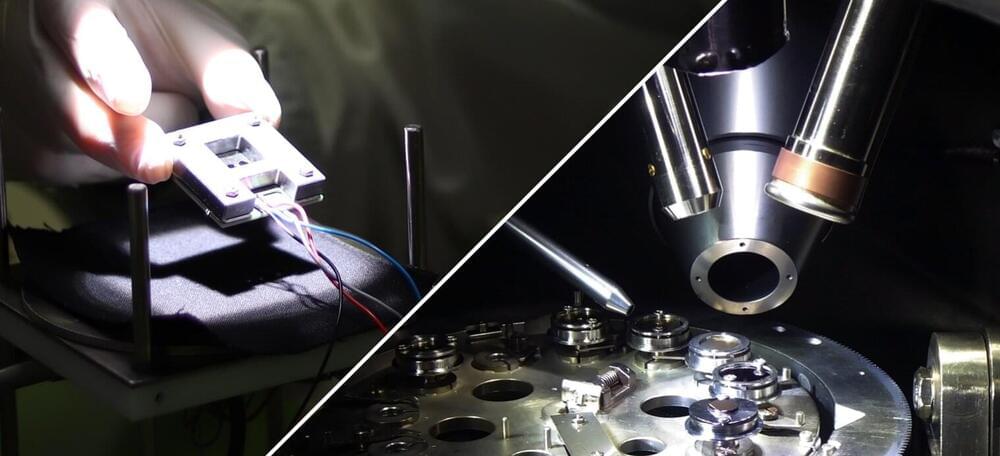Around the rim of the lens is an array of other electronics, including a custom-designed chip with a radio that streams content to the display and a variety of sensors, including an accelerometer, gyroscope, and magnetometer for tracking the user’s eye movements. This eye tracking capability not only ensures that AR imagery holds still as the user looks around, but also makes it possible to control the device through eye movements alone.
Despite their efforts to pack as much into the lens as possible, it won’t be a stand-alone piece of equipment. Most of the computing power required to run AR applications will be contained in a companion device worn around the neck, which will stream the content to the lens wirelessly.
The lens also hasn’t yet been cleared by the FDA for human use, so early demonstrations involve looking through a lens on a stick just in front of the eye. At present it is only capable of producing images in a green monochrome. But according to CNET , the device allows a user to select a variety of apps arranged in a ring around the periphery of their field of vision using nothing more than their gaze. These make it possible to do everything from checking flight information to using a compass to navigate and track fitness data like heart rate and lap number.









